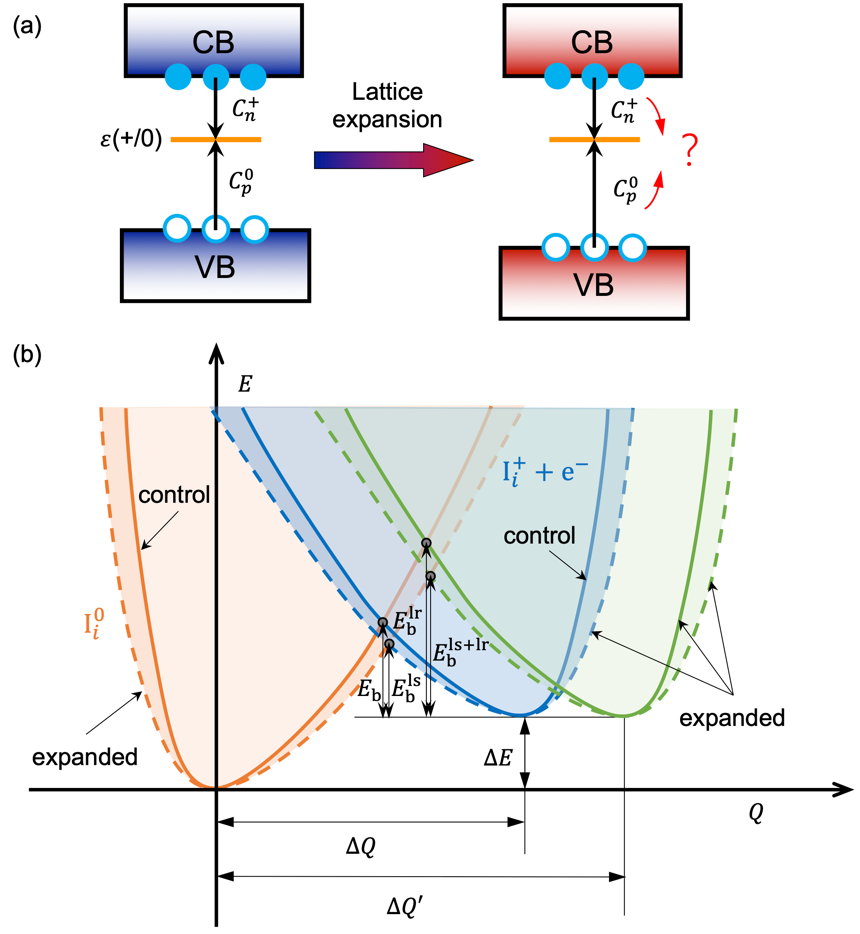Hybrid perovskites are considered one of the most promising candidates for next-generation high-performance photovoltaic materials. Their latest solar conversion efficiency has surpassed 25%, which is comparable to that of the conventional single-crystal silicon cells. It is particularly remarkable that it took only around a decade for hybrid perovskites to reach this excellent performance, while other conventional cells have been extensively researched for almost half a century to achieve this level of high efficiency. Understanding the microscopic mechanisms underlying the excellent performance of hybrid perovskites is thus not only important for further improving their efficiencies, but may also help to derive new principles and strategies for the design of high-performance semiconductors.
In 2018, the Mohite group at the Los Alamos National Lab and their collaborators reported an interesting yet puzzling experimental observation that continuous light exposure could induce pronounced lattice expansion (~1.4%) of hybrid perovskites and accordingly an enhancement of a few per cent in their solar conversion efficiency [H. Tsai et al., Science 360, 67 (2018)]. Despite the large amount of follow-up studies, it is still unclear what the fundamental origin of this puzzling experimental observation is. This puzzle has now been well resolved by Prof. Xie Zhang and Prof. Su-Huai Wei at the Beijing Computational Science Research Center in their recent publication in Physical Review Letters [X. Zhang and S.-H. Wei, Phys. Rev. Lett. 128, 136401 (2022)].
By performing rigorous first-principles calculations for a prototypical hybrid perovskite FAPbI3 (FA: formamidinium), they clearly showed that 1% lattice expansion could already reduce the nonradiative capture coefficient by one order of magnitude. Unexpectedly, the suppressed nonradiatve capture is not caused by commonly assumed mechanisms such as changes in the band gap or defect transition level due to lattice expansion. Instead, it actually originates from enhanced defect relaxations associated with charge-state transitions in the expanded lattice, which effectively increases the energy barrier for carrier capture. These insights not only provide a rationale for the light-induced efficiency enhancement in hybrid perovskites, but also offer a general approach to manipulating nonradiative capture via light-lattice coupling in a wide spectrum of optoelectronic materials.

FIG 1. (a) Schematic illustration of the impact of lattice expansion on the charge-state transition level and nonradiative capture coefficients. (b) Schematic showing the impact of lattice expansion on the electron capture barrier of the iodine interstitial.
References:
[1] X. Zhang and S.-H. Wei, Origin of Efficiency Enhancement by Lattice Expansion in Hybrid-Perovskite Solar Cells, Phys. Rev. Lett. 128, 136401 (2022).
https://journals.aps.org/prl/abstract/10.1103/PhysRevLett.128.136401



